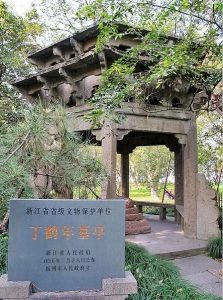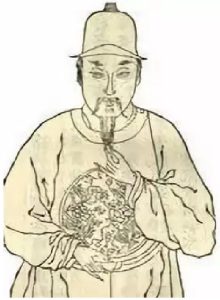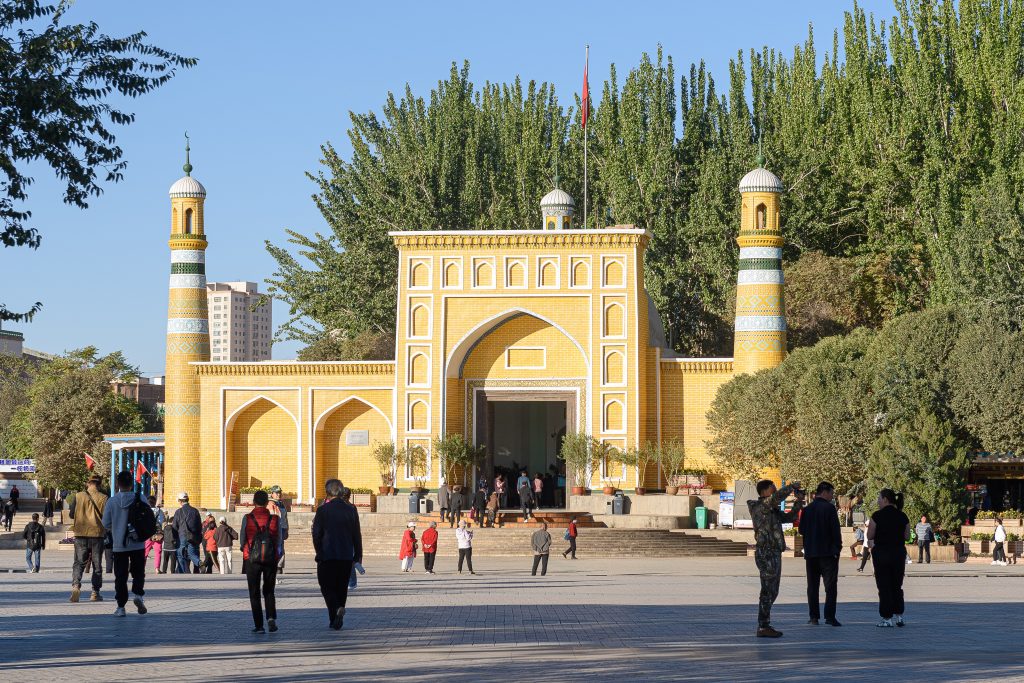5. Islam in China
Islam in China is also known as “Hui religion,” “Tianfang religion,” and “Qingzhen religion.” Its followers are called “Muslims.” Islam originated in the Arabian Peninsula in the 7th century AD, and its founder is Muhammad, who claimed to be the messenger of Allah. He began publicly preaching in Mecca in 612 AD, proclaiming that Allah is the sole ruler of the universe and urging people to reject polytheism. The teachings of Islam are listed in the Quran, also known as the Koran, which comprises the exhortations, decrees, and discourses Muhammad delivered in the name of Allah during his missionary work, later compiled by his disciples.


The Tomb (left) and a portrait (right) of Ding Henian (1335 – 1424), a famouse Hui poet
The basic beliefs of Islam are:
- Belief in Allah as the sole creator and ruler of all things, omnipresent and eternal. Chinese Muslims refer to Allah as “Zhenzhu真主” (the True God).
- Belief that Muhammad is the last messenger sent by Allah to convey divine will and guide humanity.
- Belief in angels, who are spirits created by Allah, genderless and invisible, with various duties.
- Belief that the Quran is the divine revelation from Allah, containing immutable teachings and serving as a code of conduct for Muslims.
- Belief in predestination, that all events and outcomes in life, including wealth, status, fortune, and the fate of nations, are determined by Allah and cannot be predicted or altered.
- Belief in the resurrection after death and the Day of Judgment, when Allah will resurrect the dead and judge each person based on their deeds in life, deciding their eternal fate in paradise or hell.
Islam was introduced to China around the Tang dynasty (618 – 907). In 651 AD, the third Caliph of Muhammad, Uthman, sent envoys to Chang’an, the capital city of Tang Dynasty (current Xi’an city) to meet the Chinese emperor, introducing the Arabian Empire and the teachings of Islam. During the Tang (618 – 907) and Song (906 – 1279) dynasties, the number of Arab merchants coming to China increased, playing a crucial role in trade and cultural exchange between the East and West. Due to their Islamic faith, they lived together, built mosques, and established public cemeteries. By the Yuan dynasty (1206 – 1368), Muslims had intermarried with local Chinese residents, gradually forming the Hui ethnic group, one of China’s ethnic minorities. Through integration with the Han Chinese, some Muslims adopted Han surnames. Hui people also held various government positions, and the government established Hui schools and mosques for their children. To this day, many places in China still retain Arabic-style buildings, mosques, and Muslim cemeteries.

Hëytgah Mosque in Kashi, Xinjiang which is the biggest Islam Mosque in China
In October 1958, the Chinese government established the Ningxia Hui Autonomous Region and the Xinjiang Uygur Autonomous Region in northwestern China. Ningxia has a total area of about 66,400 square kilometers (about 25,637.17 square miles), with one-third of its population being Muslim. Xinjiang is the largest provincial-level administrative region in China, with a total area of 1.66 million square kilometers (about 640,929.32 square miles), and nearly half of its population are Muslims. In recent years, tensions between Muslims and the central Chinese government have been reported, with various news of persecution of Muslims frequently appearing in overseas media.

